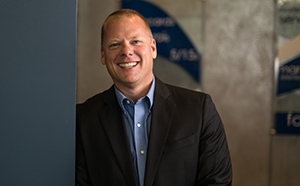On October 14, 2012, as with millions of others from around the world, I too watched and was intrigued with Felix Baumgartner’s record-breaking jump from space.
The world watched in anticipation as he ascended into space in a balloon that was more than a football field wide and 55 stories high, the skin of which was thinner than a sandwich baggy. For many, the world stood still when Baumgartner reached an altitude of 24 miles above the Earth. He opened the hatch and depressurized his capsule while ice crystals blew off into the inhabitable environment around him, then stepped into a free-fall that would push him beyond the speed of sound (at his peak velocity, he traveled Mach 1.24).
But it wasn’t so much the act that I was intrigued with as much as I was the story behind it.
It’s a story that many can learn from.
Here are a few things that I took away.
1. Often, our greatest accomplishments occur after we push through our most difficult barriers.
One might assume that an individual, with the expressed intent of riding a balloon into outer space in order to jump from it and plummet to earth as fast as humanly possible, is fearless. For Baumgartner, it wasn’t heights that he feared, it was a debilitating claustrophobia that he experienced every time he put his suit on. That fear not only delayed his jump for months, it almost derailed it. Even though his suit was the only thing protecting his body from freezing, keeping his blood from boiling and his lungs from over inflating, he worried that he might start ripping it off like a crazy man during his free fall.
2. Stand on the shoulders of giants
“Be sure to duck your head real low as you go out the door.” So came the advice from Baumgartner’s mentor, retired US Air Force Pilot Joseph Kittinger, in his earpiece as he stepped out.
Kittinger, who held the previous record for the highest freefall, was not a competitor, but rather a reassuring voice for Baumgartner. In fact, he was the only voice permitted to speak to him on that lonely journey up and during the quick journey down.
Make sure to give the voice of the mentor in your life priority over others. Listen when they teach. If you want to be rich, don’t take financial advice from a poor person.
Don’t settle for any mentor, find someone who is exceptional in the area that you want to be exceptional. When Baumgartner decided that he wanted to break Kittinger’s record, he didn’t treat him as a competitor, he actively sought him out and asked for his help.
3. When faced with challenges, forget about the things you can’t change and focus on those that you can change.
Baumgartner’s jump did not go off without a hitch. In fact, it very nearly proved fatal.
When Baumgartner’s faceplate began fogging up, it became evident very quickly that there was a malfunction with the heater unit. It was not something that he could fix and so he continued without expending any more energy worrying about it.
During the free fall, he began a high velocity spin. “The exit was perfect, but then I started spinning slowly. I thought I’d just spin a few times and that would be that, but then I started to speed up and it was brutal at times. I thought for a few seconds that I might loose consciousness.” Baumgartner began what is known as a flat spin, a deadly phenomenon that would prevent him from deploying his parachute (because he would get tangled in it) and which would quickly cause him to lose consciousness.

